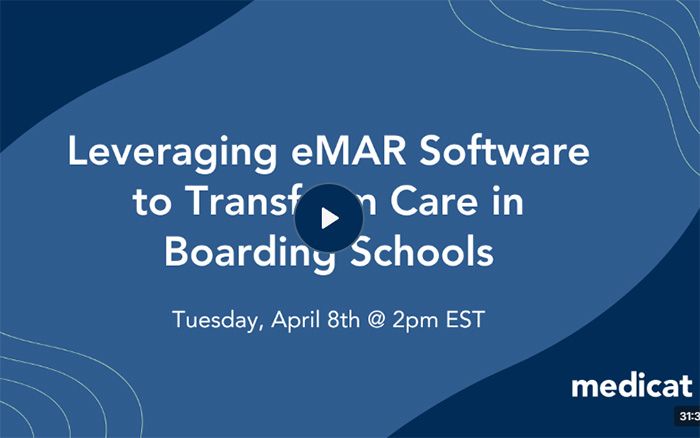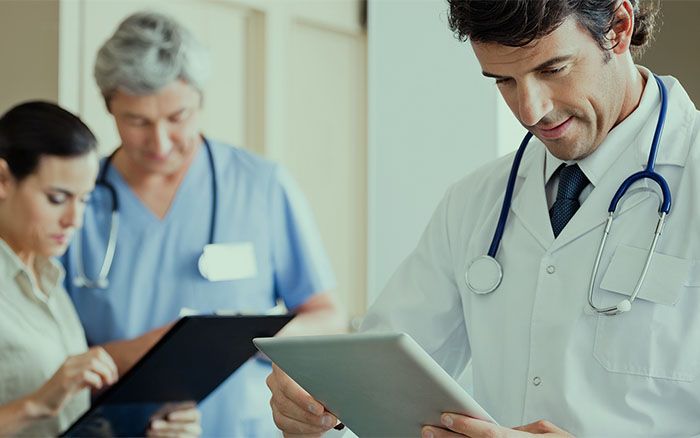Is Your Campus Health Clinic Ready to Serve Faculty and Staff?
Key Considerations by College Size
As colleges place more focus on whole-campus well-being and talent retention, many are asking: Should our health center also serve faculty and staff?
Extending care beyond the student population can strengthen community health, build campus cohesion, and boost the visibility of your clinic. But it’s not a simple decision. From credentialing to capacity, there are important operational, legal, and financial factors to weigh.
Let’s walk through:
- Key questions to ask before expanding services
- The benefits and drawbacks of serving faculty/staff
- How your college’s size and structure can impact the decision
- Alternative models that allow for flexibility without overextending
Key Questions to Ask Before Expanding Services
Assessing Your Campus Clinic’s Current Capacity
Before expanding services to include faculty and staff, it’s important to evaluate your current operations.
- Are your exam rooms consistently in use?
- Do you have sufficient providers to support additional visits without affecting student access?
- Could extending hours into the evenings or weekends increase flexibility?
Understanding your capacity for space, staffing, and scheduling will help you determine whether expansion is realistic and sustainable.
Credentialing To Bill Employee Health Insurance Plans
Unlike student health services, which often operate under different billing models, providing care to employees typically requires credentialing with commercial insurance plans.
If your clinic isn’t already set up to accept a range of health plans, you may need to:
- Establish payer contracts
- Train staff on new billing workflows
- Implement claims processing systems
These changes can be complex, but they are essential for reimbursement and the financial well-being of your clinic long-term.
Recognizing Existing Informal Care Patterns
Are faculty or staff already asking your providers for quick advice or informal care?
This may indicate both a need and an opportunity. Formalizing those services:
- Helps clarify provider roles and liability
- Enhances continuity of care
- Builds trust in a more structured employee wellness offering
Aligning with Existing Employee Health Programs
If your institution already has an Employee Health or Occupational Health department, take time to assess how your clinic could complement, rather than compete with, those services.
Look for opportunities to:
- Collaborate on wellness initiatives
- Coordinate care or referrals
- Clearly define departmental roles
A strong partnership can enhance the well-being of your entire campus community.
Top Benefits of Offering Faculty and Staff Care
Promotes Campus-Wide Well-Being for Faculty and Staff
When your institution offers healthcare to faculty and staff through on-campus clinics, it demonstrates a strong commitment to holistic wellness. Employees feel supported—and wellness becomes a shared institutional value.
This approach also reinforces existing well-being efforts, such as:
- Employee wellness programs
- Campus mental health initiatives
- Preventive care campaigns
Strengthens Interdepartmental Relationships
Serving faculty and staff creates more natural engagement between the health clinic and other departments. These touchpoints foster:
- Increased communication across campus
- More frequent and effective referrals
- Greater collaboration and buy-in for student health initiatives
By being part of the care ecosystem for all campus members, your clinic becomes a central resource for students and the wider campus community.
Supports Expansion of Services and Staffing
Extending services to employees can help justify:
- Hiring additional clinical staff
- Investing in new equipment or telehealth platforms
- Expanding evening or weekend hours
Demand growing beyond the student population may provide the data and use cases needed to advocate for clinic growth.
Enhances Public Health Efforts on Campus
Faculty and staff are an ideal audience for preventive health programs. Expanding services to employees allows clinics to:
- Promote flu or COVID-19 vaccination clinics
- Offer health screenings like blood pressure or cholesterol checks
- Increase participation in seasonal wellness initiatives
Offers Continuity of Care in a Familiar Setting
For many employees—especially those working closely with students—an on-campus clinic is already a trusted space. By formalizing services for faculty and staff:
- Care becomes more accessible and less intimidating
- Earlier intervention is more likely
- Clinical relationships are strengthened across the board
Challenges to Address Before Expanding
Navigating Insurance Billing Complexities
Unlike student health plans, employee benefits often span multiple networks with varying reimbursement rules. To successfully bill for faculty and staff visits, clinics may need to:
- Contract with new insurance payers
- Adapt claims processing workflows
- Train billing staff on commercial insurance codes and timelines
Without these systems in place, clinics risk delays, denied claims, and administrative strain.
Understanding FERPA and HIPAA Compliance Differences
Student health information is protected under FERPA, while employee health records fall under HIPAA. For clinics serving both populations, this distinction can create compliance risks.
To stay aligned with privacy laws, your clinic will need:
- Clear protocols for managing records
- Staff training on confidentiality differences
- Policies to prevent data mishandling across groups
Assessing Current Clinic Capacity
Before expanding, take a close look at how your clinic is functioning today:
- Are exam rooms regularly booked?
- Is your staff stretched thin?
- Are appointment wait times increasing?
If resources are already tight, serving more patients—however well-intentioned—could affect student access and satisfaction. Consider phased growth or infrastructure upgrades first.
Addressing Credentialing and Liability Requirements
Expanding your scope of care often means navigating new provider requirements. Depending on your clinic’s setup, this could include:
- Obtaining additional state or payer credentials
- Adjusting malpractice coverage
- Ensuring privileges align with expanded duties
These details are essential for compliance, provider protection, and the long-term sustainability of new services.
Tailoring Your Strategy by Campus Size
Small Colleges
Smaller campuses often have streamlined communication and a tight-knit community. This environment can make faculty and staff more comfortable seeking care through an on-campus clinic.
With limited staff and exam room space, small clinics may struggle to scale services. Without the economies of scale of larger institutions, sustaining faculty and staff care year-round may not be feasible.
Large Universities
Larger institutions typically have bigger budgets, more facility space, and existing healthcare infrastructure. Thus, this makes it easier to dedicate specific staff or resources to employee care.
Coordinating with HR, compliance teams, and other departments can be more complex. Securing buy-in may require aligning across multiple stakeholders and navigating institutional bureaucracy.
Community Colleges
Offering services to faculty and staff at community colleges can help reduce health disparities—particularly in rural or underserved regions with limited provider access.
Many community colleges don’t yet have formal health centers, making implementation more logistically challenging. Starting small with limited services or partnerships may be the most realistic path forward.
Flexible Models That Support Faculty and Staff Without Overextending
Seasonal or Event-Based Services
Provide targeted offerings such as flu shot clinics, biometric screenings, or health fairs during specific times of year.
This approach:
- Keeps staffing needs minimal
- Helps gauge interest from faculty and staff
- Supports public health initiatives without overextending resources
Referral and Navigation Support
Rather than becoming a full-service care provider for employees, your clinic can offer:
- Health education resources
- Triage and symptom assessments
- Referrals to local or telehealth providers
This model builds trust while allowing your clinic to remain student-focused.
Designated Hours or Staff for Employee Care
If your clinic decides to offer year-round care to employees, consider separating visits by:
- Designating specific appointment blocks for faculty/staff
- Assigning certain providers to handle employee care
This preserves student access while ensuring employees receive care respectfully and organizationally.
Key Takeaways
There’s no universal model for expanding college health clinics to serve faculty and staff. But with thoughtful planning and a scalable approach, it’s possible to enhance campus wellness, strengthen institutional culture, and extend the reach of your clinic.
Start by asking the right questions about capacity, policy, and demand. Pilot small programs, gather feedback, and scale gradually to ensure success.
Take the next step in your clinic’s growth: Read our guide on optimizing your college health billing processes.











